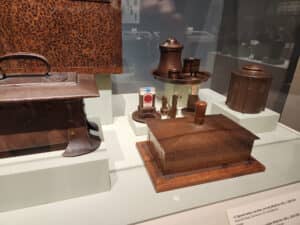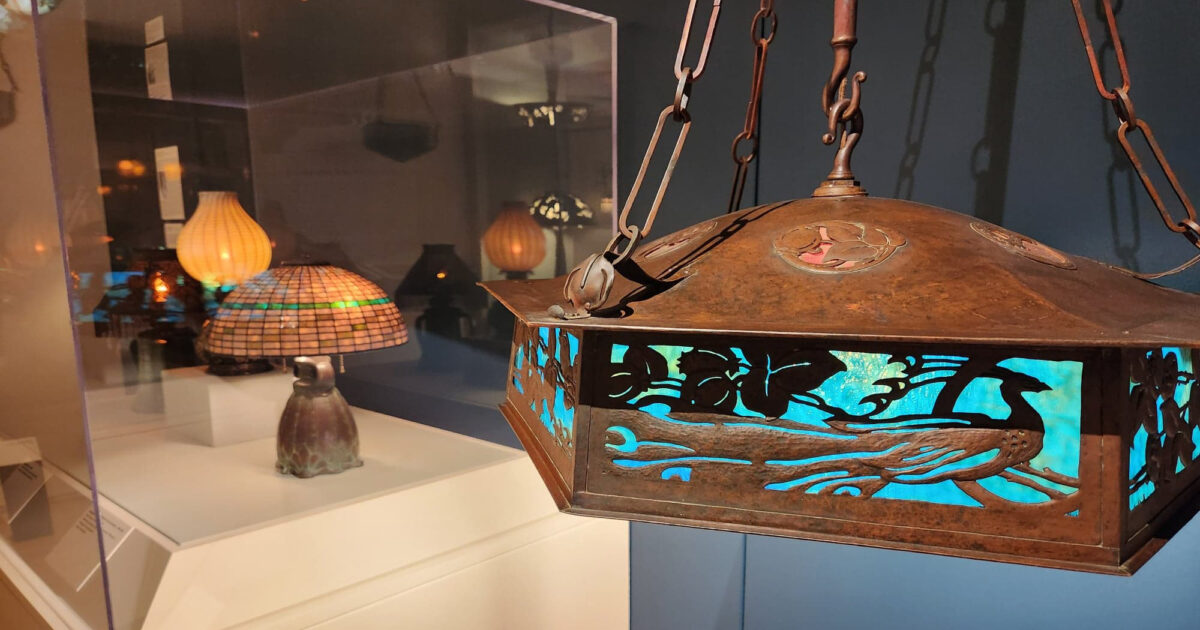It is usually approved that what grew to become the central manifesto of the American Arts & Crafts Movement was initially uttered by British textile designer William Morris: “Have nothing in your residences that you do not know to be practical or believe that to be attractive.”
The Museum of the American Arts & Crafts Movement, at 355 4th Street North, St. Petersburg, is composed of 5 stories of gallery house focused to spectacular “decorative arts” made involving, about, 1890 to 1930. What is on look at is a rotating cross-section of the huge private assortment of Pinellas County resident Rudy Ciccarello, who opened the museum in 2021, and his Two Pink Roses Foundation.
The new show Dignity and Grace: These Humbler Metals shows 350 hand-crafted items of practical metalwork, from several of the most sizeable artists of the period. Almost everything is produced from iron or malleable copper.
Humbler metals, as opposed to valuable metals. There’s no gold or silver listed here.
 “What the artists actually wanted to do was simplify the design,” explains director of functions Andrea Morgan. “They were rebelling against the Victorian era that came in advance of. So they’ve simplified patterns without the need of any of the addition finials or decorations. They seriously preferred to distill it down to its most basic things.”
“What the artists actually wanted to do was simplify the design,” explains director of functions Andrea Morgan. “They were rebelling against the Victorian era that came in advance of. So they’ve simplified patterns without the need of any of the addition finials or decorations. They seriously preferred to distill it down to its most basic things.”
From the small to the towering, they are specific works of artwork, applying geometric forms, normal tones and stylized inventive abstraction.
But always useful. There are candlesticks, chandeliers, steins, urns, flower pots, umbrella stands, sconces, fittings, plant stands, hearth parts, bookends, coal buckets, pitchers, trinket packing containers, humidors, oil lamps and electric lamps, along with furnishings applying hand-produced metallic items.
Every floor of the Museum of the American Arts & Crafts Movement (MAACM) is committed to a unique willpower there are pristine illustrations of home furnishings, pottery, ceramic tiles and architectural faience, metalwork, woodblocks, high-quality artwork, lights, textiles and leaded glass.
“In our museum,” Morgan claims, “we definitely don’t have the want for chronological, due to the fact the movement is these a snapshot in time. What we concentration on is the makers, the artists, the methods.”
On view in Dignity and Grace: These Humbler Metals – on the third ground – are metalworks by this kind of notables as Karl Kipp, Gustav Stickley, Robert Jarvie, the Roycroft Shops, Marie Zimmermann, Greene & Greene, Elizabeth Copeland, Jessie Preston, Dirk van Erp and even Frank Lloyd Wright, whose enormous copper urn (c. 1899) is a single of only 6 recognised extant examples.
“You do not tend to see a large amount of metalwork from Frank Lloyd Wright,” Morgan factors out. “You imagine of him as an architect. You could possibly see chairs, lights fixtures and factors like that. So this urn is really exclusive.”

Get the job done by Samuel Yellin (1884-1940).
Grasp ironworker Samuel Yellin is represented by an business office partition and gate commission by a New York City ad company. The MAACM has re-produced an business place (circa 1920s) to set it in context.
There’s a cabinet manufactured at “Furniture City,” the Michigan dwelling of the Stickley Brothers, manufactured from extremely-sturdy quarter-sawn oak. Produced in 1904, the piece seems to be showroom-new. “I have 10-12 months-old home furniture at home that does not look this very good,” Morgan claims.

China cabinet by the Stickley Brothers, 1904.
The artistry, she points out, is fewer tangible at 1st. “They took functional elements and manufactured them ornate. Alternatively of possessing carved cherubs or lions on a China cabinet, they were being taking what the China cabinet wanted, which was hinges and drawer pulls, and producing them gorgeous.”
The American Arts & Crafts Movement did not endure the tsunami of industrial mass manufacturing. “These ended up objects, in principle, for the everyman,” Morgan says. “But not just about every guy could find the money for them.”
There ended up other aspects, far too. “In the early decades of the 20th century, the abstract impressionism, impressionism, surrealism and futurism movements, all that stuff was going on extremely promptly. And by the time we were being embroiled in World War I, the times had just adjusted, and the movement fizzled out.”
Ah, but there is usually a location for good quality workmanship. Factors and concepts of the Motion passed from era to technology, according to Morgan. “When you believe of Mid-Century Modern-day household furniture, that is straight impact by the Arts & Crafts Motion. They took the concept of simplicity, and geometric sorts, and modernized it in the ‘50s and ‘60s.
“And there are artists and artisans who nonetheless follow this way nowadays.”
Simply click here for info on Dignity and Grace: These Humbler Metals and the Museum of the American Arts & Crafts Movement.




